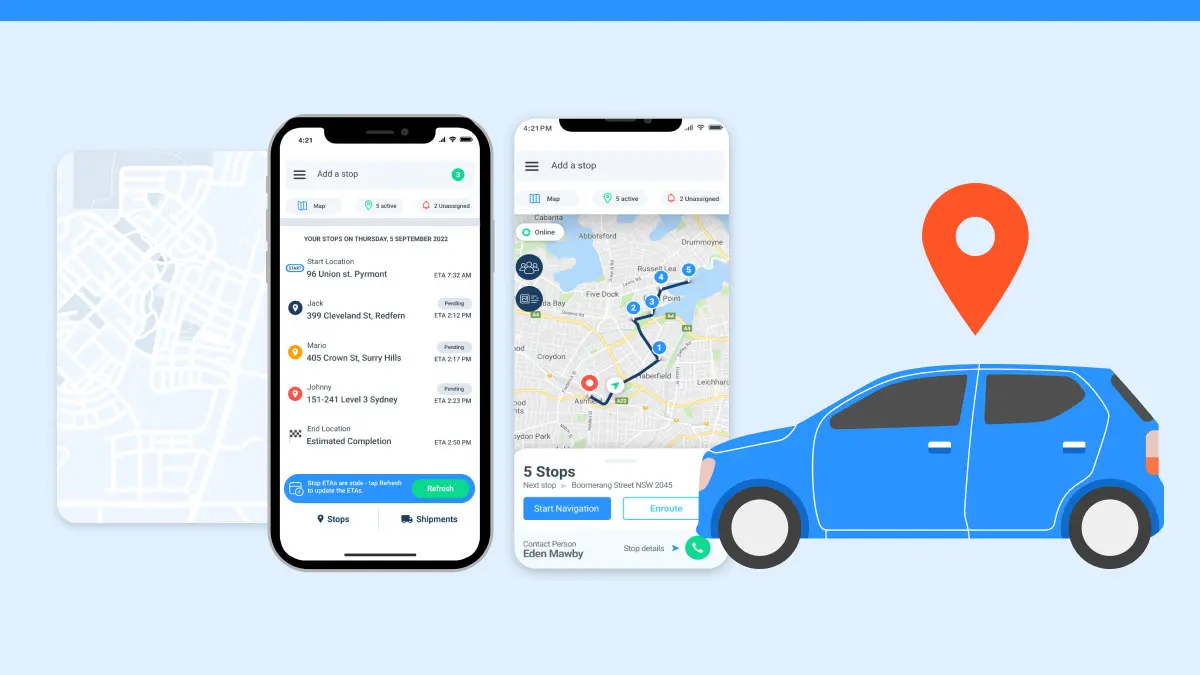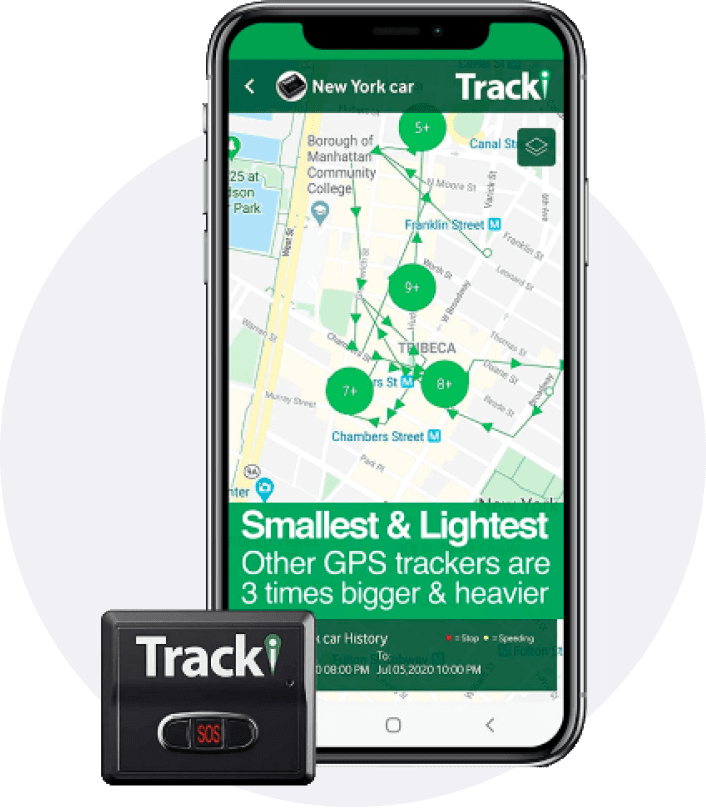Recognizing GPS Tracking: Technology, Applications, and Benefits
Recognizing GPS Tracking: Technology, Applications, and Benefits
Blog Article
Optimizing Efficiency With GPS Monitoring: Techniques for Fleet Management and Property Surveillance
In the world of fleet administration and asset tracking, the utilization of general practitioner radar has actually ended up being a cornerstone for boosting operational performance and efficiency. By utilizing the power of real-time information, organizations can enhance their logistics, enhance paths, and improve overall fleet efficiency. Nonetheless, the true prospective lies not just in the execution of these modern technologies but also in the calculated utilization of the insights they offer. From improving driver safety to making notified decisions based on extensive data analytics, the chances are substantial. As we explore the various techniques and strategies to optimize effectiveness with GPS tracking, a world of opportunities opens up to redefine just how organizations manage their fleets and monitor their properties.
Implementing Real-Time Monitoring Solutions
To optimize operational performance, business can apply real-time radar that provide instant place data for their possessions. By utilizing GPS technology, organizations can obtain real-time understandings right into the whereabouts of their automobiles, tools, and various other important resources. This degree of presence allows companies to streamline operations, enhance efficiency, and enhance overall performance.
Real-time radar use various benefits for companies across different sectors. With the ability to keep an eye on properties continuously, organizations can enhance routing, timetable upkeep extra effectively, and reduce the risk of burglary or loss. These systems make it possible for organizations to respond promptly to any type of unforeseen events or disturbances, making sure minimal downtime and maximum performance.
Carrying out real-time radar requires cautious preparation and factor to consider of certain service requirements. Companies should select the right modern technology provider, tailor the system to meet their needs, and provide appropriate training to staff members. By investing in real-time monitoring options, businesses can stay ahead of the competition, deliver premium consumer service, and achieve lasting development in today's busy market atmosphere.
Optimizing Route Planning and Scheduling

One trick strategy for optimizing course planning is to use historical data and real-time info to recognize the most effective courses for automobiles. By evaluating previous routes and thinking about factors such as web traffic patterns and distribution windows, companies can produce schedules that decrease unneeded stops and hold-ups. Additionally, applying dynamic routing capacities permits for changes to be made in real-time based upon changing problems, ensuring that vehicle drivers always take the most effective path to their destination.
Enhancing Chauffeur Efficiency and Safety
Enhancing driver efficiency and safety is vital in making certain the secure and smooth procedure of a fleet. By using general practitioner tracking technology, fleet supervisors can check motorist behavior in real-time and give immediate feedback to advertise secure driving methods. This includes tracking speed limits, rough stopping, acceleration patterns, and adherence to website traffic guidelines.
Additionally, GPS radar can assist in identifying vehicle drivers that may require additional training or assistance to enhance their efficiency (gps tracking). By examining data on driving behaviors and patterns, fleet managers can apply targeted training programs to address specific locations of enhancement. This aggressive approach not just boosts total chauffeur performance yet also contributes to a safer job atmosphere for every person find more information included
In enhancement to efficiency monitoring, general practitioner radar can also improve driver safety by giving emergency situation aid features. In case of a mishap or malfunction, drivers can rapidly send out distress signals, permitting fleet supervisors to react promptly and dispatch aid when required. Overall, integrating GPS tracking technology into fleet management techniques is critical for optimizing driver efficiency and making sure the security of both possessions and vehicle drivers.

Utilizing Geofencing for Enhanced Security
Making the most of fleet safety goes past checking motorist efficiency and security; one efficient method is through the strategic use of geofencing technology. Geofencing enables fleet managers to develop virtual limits or geozones around specific areas, enabling them to obtain real-time informs when vehicles go into or leave these designated areas. By establishing up geofences around high-risk places such as building and construction websites, unapproved areas, and even client locations, fleet managers can enhance protection measures and minimize possible risks.
Geofencing not just enhances safety yet also allows fast reaction times in instance of unauthorized Click Here vehicle use or theft. In the event of a violation, signals can be sent out to fleet supervisors, allowing them to take instant action to locate and recoup the automobile. Furthermore, geofencing can aid in monitoring lorry motion throughout off-hours, making sure that vehicles are not being made use of for unapproved functions.
Integrating GPS Information for Strategic Decision-Making
Using GPS data combination is necessary for notified strategic decision-making in fleet monitoring procedures. By incorporating GPS data into fleet management systems, services can acquire useful insights into their operations, leading to more efficient courses, enhanced motorist behavior, and much better overall performance. Via the integration of GPS data, fleet supervisors can track lorry areas in real-time, display fuel intake, and evaluate motorist efficiency metrics such as speed, idling time, and severe stopping.
In addition, incorporating GPS data enables the optimization of paths based on web traffic problems, climate patterns, and various other exterior variables, helping to reduce delivery times and functional prices. By analyzing historic GPS information, fleet supervisors can recognize fads, patterns, and areas for improvement, enabling them to make data-driven decisions that improve performance and enhance procedures.
Final Thought
To conclude, the implementation of GPS radar can significantly enhance effectiveness in fleet administration and property monitoring. By using real-time monitoring, enhancing path preparation, enhancing chauffeur performance, utilizing geofencing for safety and security, and integrating GPS information for tactical decision-making, companies can accomplish and boost operations cost savings (gps tracking). These techniques allow companies to enhance processes, increase performance, and ultimately optimize the total performance of their procedures
In the world of fleet monitoring and possession surveillance, the utilization of GPS monitoring systems has actually become a foundation for boosting operational performance and performance. As we explore the numerous methods and methods to optimize effectiveness with this link GPS monitoring, a globe of possibilities opens up to redefine how organizations handle their fleets and check their properties.
By making use of General practitioner tracking innovation, fleet supervisors can keep track of vehicle driver behavior in real-time and give immediate comments to advertise safe driving techniques. Through the assimilation of GPS information, fleet supervisors can track automobile locations in real-time, display gas usage, and examine motorist performance metrics such as rate, idling time, and rough stopping.
In conclusion, the implementation of GPS tracking systems can considerably boost performance in fleet administration and possession surveillance.
Report this page